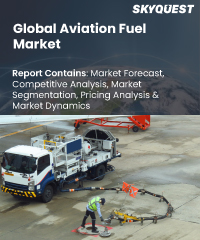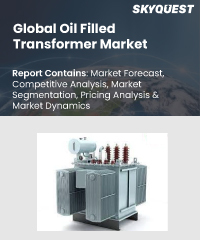USD 219.79 billion

Global Aviation Fuel Market Size, Share, Growth Analysis, By Fuel(Avgas, Jet Fuel), By End User(Private, Commercial) - Industry Forecast 2023-2030
Report ID:
SQMIG10G2027 |
Region:
Global |
Published Date: February, 2024
Pages:
157
|
Tables:
63 |
Figures:
75
Global Aviation Fuel Market Insights
Aviation Fuel Market size was valued at USD 219.79 billion in 2019 and is poised to grow from USD 249.9 billion in 2023 to USD 793.62 billion by 2031, growing at a CAGR of 13.7% in the forecast period (2024-2031).
Worldwide, a variety of aviation fuels are widely utilized to power aircraft in both commercial and military uses. Rise in air traffic passengers across the globe, particularly in emerging nations; and volatility in crude oil prices are supporting the evolution trajectories of the aviation fuel market. The number of airline passengers has increased, which has increased the need for aviation fuel in developing countries. The market for biofuels is being driven by a growing emphasis on lowering the carbon footprint of the transportation sector as a whole. Players in the aviation business are paying close attention to renewable aviation fuels, particularly in industrialized nations like the U.S.
The International Air Transport Association estimates that passenger air traffic has increased significantly over the past few years and will double by the end of 2036. The annual growth in air passenger numbers has been fueled by recent advances in the world economy. One of the main factors enticing travelers, especially those who are cost conscious, is the decline in average airfares. Increased standards for cargo handling are also positive for the market.
The rapid increase in air travelers in emerging nations like those in the Asia Pacific is predicted to lead to a significant expansion of the worldwide market for aviation fuel. The market is being driven by an increase in revenue passenger kilometers during the past few years. Due to the expansion of passenger airline capacity in various emerging nations, there has been a major growth in the demand for aviation fuel. The market is being driven by a trend toward the use of more affordable aviation fuels and fuels with lower carbon footprints.
US Aviation Fuel Market is poised to grow at a sustainable CAGR for the next forcast year.
Market snapshot - 2024-2031
Global Market Size
Largest Segment
Jet Fuel
Fastest Growth
Avgas
Growth Rate
13.7% CAGR
To get more reports on the above market click here to Buy The Report
Global Aviation Fuel Market Segmental Analysis
Global aviation fuel market is segmented based on the Fuel, End user, and region. Based on the Fuel, the Aviation Fuel Market is segmented as avgas, jet fuel, and synthetic fuel. Based on End User, the Aviation Fuel Market is segmented as private, commercial and military. Based on Region Aviation Fuel Market is categorized into North America, Europe, Asia-Pacific, Latin America, and MEA.
Aviation Fuel Market Analysis by Fuel
Based on Fuel the Aviation Fuel market is segmented into avgas, jet fuel, and synthetic fuel. The jet fuel category held the most market share, and is expected to lead throughout the projection period. Jet fuel is a type of petroleum-based fuel that is used to power jet and turboprop aircraft engines. The two main aviation fuel grades used by the commercial airline industries are Jet A1 and Jet A. Both of them are kerosene-based fuels made in accordance with a set of international standards. Due to significant investment in the airline industry, which has increased revenue on the global market, air travel connectivity is at its highest point. According to reports from Boeing, one of the most well-known producers of commercial aircraft, the rise in passenger air travel has resulted in the highest order for commercial airbuses, cargo. Commercial air fleets use a sizeable portion of the aviation fuel produced worldwide.
Aviation Fuel Market Analysis by End User
Based on the End User, the Aviation Fuel market is bifurcated into private, commercial and military. The market for Aviation Fuel was dominated by the commercial segment over the forecast period. Due to the industry's commercial airlines' massive investments in improving the industry's overall infrastructure, rapid economic development, and increased air traffic to accommodate large numbers of passengers. The preference for travel to developed nations and the rising per capita income of developing nations have influenced demand patterns for aviation and contributed to the explosive increase in global air passenger traffic. The increased demand for logistics across the globe is being fueled by business opportunities created by improved air connectivity and rising industrial production of aviation fuel. Therefore, commercial airlines that are preparing for the expansion of the global aviation fuel market are dominated by economic growth and rising global passenger volume.
To get detailed analysis on other segments, Request For Free Sample Report
Global Aviation Fuel Market Regional Insights
Demand for various types of aircraft, including military, commercial, and private ones, has been steadily increasing, and North America now holds a sizeable portion of the global aviation fuel market. Due to the region's established aviation industry and the presence of significant aircraft manufacturers, Europe also ranks among the top markets for aviation fuel. But during the forecast period, Asia Pacific is anticipated to experience a significant compound annual growth rate. This growth is primarily attributed to the Asia Pacific region's rapidly expanding travel and tourism sector. In recent years, the economies of India, China, and Southeast Asia have increased their investments in the tourism sector. In this region, both domestic and foreign tourists are steadily increasing. People are more likely to take vacations frequently as a result of rising disposable incomes and living standards combined with a demanding work schedule. A rise in business air travel across the world and the region has also been attributed to the acceleration of globalization. As a result, the growth of the aviation fuel market in the Asia Pacific is being supported by the sharp increase in air travel passengers, both domestically and internationally. Government policies encouraging the construction of new airports to handle the increasing number of tourists are additional factors fueling the expansion of this regional market.
- Largest
- Fastest
To know more about the market opportunities by region and country, click here to
Buy The Complete Report
Global Aviation Fuel Market Dynamics
Aviation Fuel Market Driver
- Growth and development of the economy depend heavily on air travel. Air travel promotes integration into the global economy and provides essential links on a national, regional, and international level. It supports the expansion of trade, tourism, and employment opportunities. The aviation system is changing and will keep changing. Long term, it will be challenging for the air transportation system to adapt quickly enough to meet changing demands in terms of capacity, environmental impact, consumer happiness, safety, and security, all while preserving the financial viability of service providers.
- Demand for multi-mission combat helicopters continues to be driven by political upheavals and territorial disputes. Many nations are also working to upgrade their equipment by swapping out older models for more modern aircraft that require less maintenance and have lower operating costs. Many nations are making efforts to lessen their reliance on outside suppliers for military hardware and software. Additionally, some developing nations have begun developing military aircraft production programs as a result of the exorbitant costs associated with purchasing foreign aircraft. Companies, on the other hand, are concentrating on localized military aircraft production and increasing their indigenous system technological capabilities through technology transfer agreements.
Aviation Fuel Market Restraint
- Enterprises and supply chains are under pressure to find hidden cost-saving opportunities due to rising global competition and cost pressure. Interfaces to the crude oil market in particular are a promising area for development. Every organization in the current business climate is somewhat vulnerable to changes in the price of raw materials for lubricants and crude oil. Manufacturers may rely heavily on oil commodities in their manufacturing processes, and as a result, they may be particularly vulnerable to price fluctuations in the oil products they buy both directly and indirectly through components and subassemblies. Global markets that are volatile and unstable have wide-ranging effects on manufacturing companies. Unexpected challenges are disrupting supply chains and making it difficult for manufacturers to stay profitable, from rising energy costs to unexpected fluctuations in the cost of manufacturing crude oil.
- Airlines need sustainable jet fuel to achieve their self-imposed greenhouse gas emission reduction goals because engine and flight improvements are insufficient. The cost of fuel makes up a sizable portion of operating expenses. Even though it is made from waste and inexpensive feed stocks, sustainable jet fuel requires elaborate and expensive technical processes. Sustainable jet fuel is more expensive than regular fuel due to the installation of additional manufacturing capacity. Since manufacturing capacity is anticipated to be produced on a contract basis rather than as a commodity during the first decade or so, this type of fuel won't be easily accessible. Building new biodiesel facilities requires time and money, which drives up the cost of their goods once they are in operation and limits their ability to reach the crucial point of profitability.
Request Free Customization of this report to help us to meet your business objectives.
Global Aviation Fuel Market Competitive Landscape
Global aviation fuel market is somewhat fragmented. To maintain a competitive edge, the major industry participants are continually implementing various growth strategies. Mergers, and acquisitions, collaborations and partnerships are adopted by these players to thrive in the competitive market. In order to provide industries with the most effective and economical solutions, the major market players are also continually concentrating on R&D.
Aviation Fuel Market Top Player's Company Profiles
- TotalEnergies
- ExxonMobil
- British Petroleum Fuel
- Royal Dutch Shell plc
- Chevron Corporation
- Gazprom Neft PJSC
- China National Petroleum Corporation (CNPC)
- Lukoil
- Indian Oil Corporation Limited
- Air BP Ltd.
- Essar Oil Limited
- Marathon Petroleum Corporation
- Valero Energy Corporation
- Hindustan Petroleum Corporation Limited
- Sinopec Group
- Puma Energy Holdings Pte. Ltd.
- SK Energy Co., Ltd.
- Phillips 66
- Bharat Petroleum Corporation Limited
- Reliance Industries Limited
Aviation Fuel Market Recent Developments
- In June 2022, Cash-strapped Indian carriers have been spared the additional excise burden imposed recently imposed on aviation turbine fuel (ATF) being tanked up for international flights. The Union finance ministry had issued a notification that, among other things, levied an additional excise of Rs 6 per litre on ATF exports (refuelling for international flights) and upended the exemption from 11% basic excise duty (BED). These two additional burdens have now been withdrawn for airlines
- In June 2022, Florida-based AEG Fuels launched a sustainable aviation fuel (SAF) platform that it says will provide commercial and private aircraft operators with a single-source solution to access SAF at more than 20 locations worldwide. It can be accessed through AEG’s mobile and web applications through a button click or via direct request from the company’s 24/7 fuel dispatch and international trip planning teams
Global Aviation Fuel Key Market Trends
- The aviation industry is expanding, which has increased competition among all types of producers of aircraft aviation fuel. Future developments in the production of aviation fuel from sustainable sources are anticipated to have an impact on the industry. Due to the global trend of using advanced fuels in airplanes, the market for sustainable aviation fuel has expanded significantly over the years. Farmers can increase their income during the off-season by providing feedstock to this new industry by growing biomass crops for the production of sustainable aviation fuel, while also securing agricultural benefits like nutrient loss reduction and improved soil quality.
Global Aviation Fuel Market SkyQuest Analysis
SkyQuest’s ABIRAW (Advanced Business Intelligence, Research & Analysis Wing) is our Business Information Services team that Collects, Collates, Co-relates, and Analyses the Data collected utilizing Primary Exploratory Research backed by the robust Secondary Desk research.
According to our Global Aviation Fuel Market Analysis, in terms of fuel, the polyester segment held the largest share and is estimated to maintain a similar trend over the forecast period as it is smooth, strong, and flexible in nature. In terms of end user, commercial segment accounted for a maximum market share followed by military because of large government funding.
| Report Metric | Details |
|---|---|
| Market size value in 2023 | USD 219.79 billion |
| Market size value in 2031 | USD 793.62 billion |
| Growth Rate | 13.7% |
| Forecast period | 2024-2031 |
| Forecast Unit (Value) | USD Billion |
| Segments covered |
|
| Regions covered | North America (US, Canada), Europe (Germany, France, United Kingdom, Italy, Spain, Rest of Europe), Asia Pacific (China, India, Japan, Rest of Asia-Pacific), Latin America (Brazil, Rest of Latin America), Middle East & Africa (South Africa, GCC Countries, Rest of MEA) |
| Companies covered |
|
| Customization scope | Free report customization with purchase. Customization includes:-
|
| Historical Year | 2019 |
To get a free trial access to our platform which is a one stop solution for all your data requirements for quicker decision making. This platform allows you to compare markets, competitors who are prominent in the market, and mega trends that are influencing the dynamics in the market. Also, get access to detailed SkyQuest exclusive matrix.
Buy The Complete Report to read the analyzed strategies adopted by the top vendors either to retain or gain market share
Table Of Content
Executive Summary
Market overview
- Exhibit: Executive Summary – Chart on Market Overview
- Exhibit: Executive Summary – Data Table on Market Overview
- Exhibit: Executive Summary – Chart on Global Aviation Fuel Market Characteristics
- Exhibit: Executive Summary – Chart on Market by Geography
- Exhibit: Executive Summary – Chart on Market Segmentation
- Exhibit: Executive Summary – Chart on Incremental Growth
- Exhibit: Executive Summary – Data Table on Incremental Growth
- Exhibit: Executive Summary – Chart on Vendor Market Positioning
Parent Market Analysis
Market overview
Market size
- Market Dynamics
- Exhibit: Impact analysis of DROC, 2021
- Drivers
- Opportunities
- Restraints
- Challenges
- Exhibit: Impact analysis of DROC, 2021
- SWOT Analysis
KEY MARKET INSIGHTS
- Technology Analysis
- (Exhibit: Data Table: Name of technology and details)
- Pricing Analysis
- (Exhibit: Data Table: Name of technology and pricing details)
- Supply Chain Analysis
- (Exhibit: Detailed Supply Chain Presentation)
- Value Chain Analysis
- (Exhibit: Detailed Value Chain Presentation)
- Ecosystem Of the Market
- Exhibit: Parent Market Ecosystem Market Analysis
- Exhibit: Market Characteristics of Parent Market
- IP Analysis
- (Exhibit: Data Table: Name of product/technology, patents filed, inventor/company name, acquiring firm)
- Trade Analysis
- (Exhibit: Data Table: Import and Export data details)
- Startup Analysis
- (Exhibit: Data Table: Emerging startups details)
- Raw Material Analysis
- (Exhibit: Data Table: Mapping of key raw materials)
- Innovation Matrix
- (Exhibit: Positioning Matrix: Mapping of new and existing technologies)
- Pipeline product Analysis
- (Exhibit: Data Table: Name of companies and pipeline products, regional mapping)
- Macroeconomic Indicators
COVID IMPACT
- Introduction
- Impact On Economy—scenario Assessment
- Exhibit: Data on GDP - Year-over-year growth 2016-2022 (%)
- Revised Market Size
- Exhibit: Data Table on Global Aviation Fuel Market size and forecast 2021-2027 ($ million)
- Impact Of COVID On Key Segments
- Exhibit: Data Table on Segment Market size and forecast 2021-2027 ($ million)
- COVID Strategies By Company
- Exhibit: Analysis on key strategies adopted by companies
MARKET DYNAMICS & OUTLOOK
- Market Dynamics
- Exhibit: Impact analysis of DROC, 2021
- Drivers
- Opportunities
- Restraints
- Challenges
- Exhibit: Impact analysis of DROC, 2021
- Regulatory Landscape
- Exhibit: Data Table on regulation from different region
- SWOT Analysis
- Porters Analysis
- Competitive rivalry
- Exhibit: Competitive rivalry Impact of key factors, 2021
- Threat of substitute products
- Exhibit: Threat of Substitute Products Impact of key factors, 2021
- Bargaining power of buyers
- Exhibit: buyers bargaining power Impact of key factors, 2021
- Threat of new entrants
- Exhibit: Threat of new entrants Impact of key factors, 2021
- Bargaining power of suppliers
- Exhibit: Threat of suppliers bargaining power Impact of key factors, 2021
- Competitive rivalry
- Skyquest special insights on future disruptions
- Political Impact
- Economic impact
- Social Impact
- Technical Impact
- Environmental Impact
- Legal Impact
Market Size by Region
- Chart on Market share by geography 2021-2027 (%)
- Data Table on Market share by geography 2021-2027(%)
- North America
- Chart on Market share by country 2021-2027 (%)
- Data Table on Market share by country 2021-2027(%)
- USA
- Exhibit: Chart on Market share 2021-2027 (%)
- Exhibit: Market size and forecast 2021-2027 ($ million)
- Canada
- Exhibit: Chart on Market share 2021-2027 (%)
- Exhibit: Market size and forecast 2021-2027 ($ million)
- Europe
- Chart on Market share by country 2021-2027 (%)
- Data Table on Market share by country 2021-2027(%)
- Germany
- Exhibit: Chart on Market share 2021-2027 (%)
- Exhibit: Market size and forecast 2021-2027 ($ million)
- Spain
- Exhibit: Chart on Market share 2021-2027 (%)
- Exhibit: Market size and forecast 2021-2027 ($ million)
- France
- Exhibit: Chart on Market share 2021-2027 (%)
- Exhibit: Market size and forecast 2021-2027 ($ million)
- UK
- Exhibit: Chart on Market share 2021-2027 (%)
- Exhibit: Market size and forecast 2021-2027 ($ million)
- Rest of Europe
- Exhibit: Chart on Market share 2021-2027 (%)
- Exhibit: Market size and forecast 2021-2027 ($ million)
- Asia Pacific
- Chart on Market share by country 2021-2027 (%)
- Data Table on Market share by country 2021-2027(%)
- China
- Exhibit: Chart on Market share 2021-2027 (%)
- Exhibit: Market size and forecast 2021-2027 ($ million)
- India
- Exhibit: Chart on Market share 2021-2027 (%)
- Exhibit: Market size and forecast 2021-2027 ($ million)
- Japan
- Exhibit: Chart on Market share 2021-2027 (%)
- Exhibit: Market size and forecast 2021-2027 ($ million)
- South Korea
- Exhibit: Chart on Market share 2021-2027 (%)
- Exhibit: Market size and forecast 2021-2027 ($ million)
- Rest of Asia Pacific
- Exhibit: Chart on Market share 2021-2027 (%)
- Exhibit: Market size and forecast 2021-2027 ($ million)
- Latin America
- Chart on Market share by country 2021-2027 (%)
- Data Table on Market share by country 2021-2027(%)
- Brazil
- Exhibit: Chart on Market share 2021-2027 (%)
- Exhibit: Market size and forecast 2021-2027 ($ million)
- Rest of South America
- Exhibit: Chart on Market share 2021-2027 (%)
- Exhibit: Market size and forecast 2021-2027 ($ million)
- Middle East & Africa (MEA)
- Chart on Market share by country 2021-2027 (%)
- Data Table on Market share by country 2021-2027(%)
- GCC Countries
- Exhibit: Chart on Market share 2021-2027 (%)
- Exhibit: Market size and forecast 2021-2027 ($ million)
- South Africa
- Exhibit: Chart on Market share 2021-2027 (%)
- Exhibit: Market size and forecast 2021-2027 ($ million)
- Rest of MEA
- Exhibit: Chart on Market share 2021-2027 (%)
- Exhibit: Market size and forecast 2021-2027 ($ million)
KEY COMPANY PROFILES
- Competitive Landscape
- Total number of companies covered
- Exhibit: companies covered in the report, 2021
- Top companies market positioning
- Exhibit: company positioning matrix, 2021
- Top companies market Share
- Exhibit: Pie chart analysis on company market share, 2021(%)
- Total number of companies covered
Methodology
For the Global Aviation Fuel Market, our research methodology involved a mixture of primary and secondary data sources. Key steps involved in the research process are listed below:
1. Information Procurement: This stage involved the procurement of Market data or related information via primary and secondary sources. The various secondary sources used included various company websites, annual reports, trade databases, and paid databases such as Hoover's, Bloomberg Business, Factiva, and Avention. Our team did 45 primary interactions Globally which included several stakeholders such as manufacturers, customers, key opinion leaders, etc. Overall, information procurement was one of the most extensive stages in our research process.
2. Information Analysis: This step involved triangulation of data through bottom-up and top-down approaches to estimate and validate the total size and future estimate of the Global Aviation Fuel Market.
3. Report Formulation: The final step entailed the placement of data points in appropriate Market spaces in an attempt to deduce viable conclusions.
4. Validation & Publishing: Validation is the most important step in the process. Validation & re-validation via an intricately designed process helped us finalize data points to be used for final calculations. The final Market estimates and forecasts were then aligned and sent to our panel of industry experts for validation of data. Once the validation was done the report was sent to our Quality Assurance team to ensure adherence to style guides, consistency & design.
Analyst Support
Customization Options
With the given market data, our dedicated team of analysts can offer you the following customization options are available for the Global Aviation Fuel Market:
Product Analysis: Product matrix, which offers a detailed comparison of the product portfolio of companies.
Regional Analysis: Further analysis of the Global Aviation Fuel Market for additional countries.
Competitive Analysis: Detailed analysis and profiling of additional Market players & comparative analysis of competitive products.
Go to Market Strategy: Find the high-growth channels to invest your marketing efforts and increase your customer base.
Innovation Mapping: Identify racial solutions and innovation, connected to deep ecosystems of innovators, start-ups, academics, and strategic partners.
Category Intelligence: Customized intelligence that is relevant to their supply Markets will enable them to make smarter sourcing decisions and improve their category management.
Public Company Transcript Analysis: To improve the investment performance by generating new alpha and making better-informed decisions.
Social Media Listening: To analyze the conversations and trends happening not just around your brand, but around your industry as a whole, and use those insights to make better Marketing decisions.
Global Aviation Fuel Market Report Snapshots
Want to customize this report?
Our industry expert will work with you to provide you with customized data in a short amount of time.
REQUEST FREE CUSTOMIZATION



 USA (+1) 617-230-0741
USA (+1) 617-230-0741
